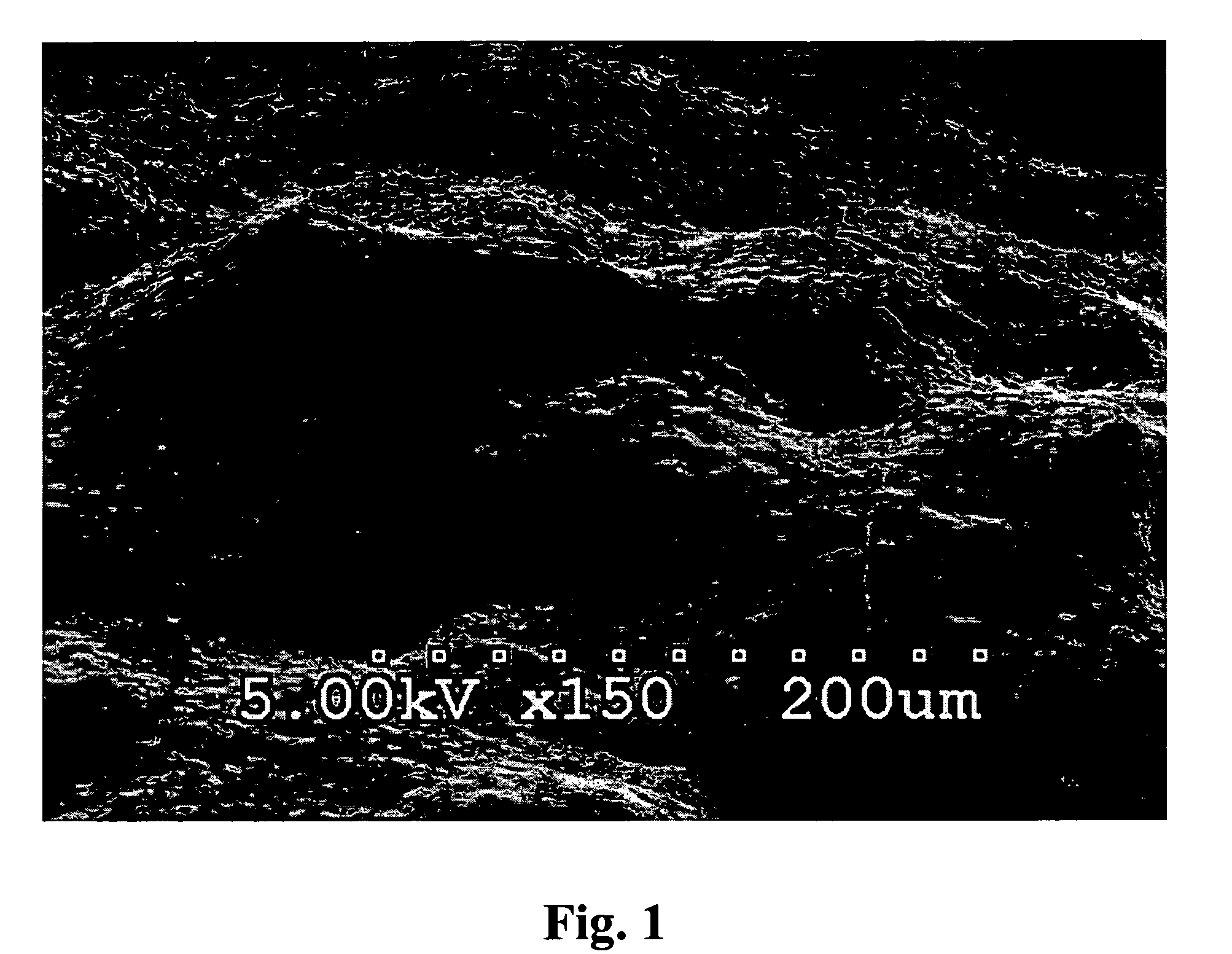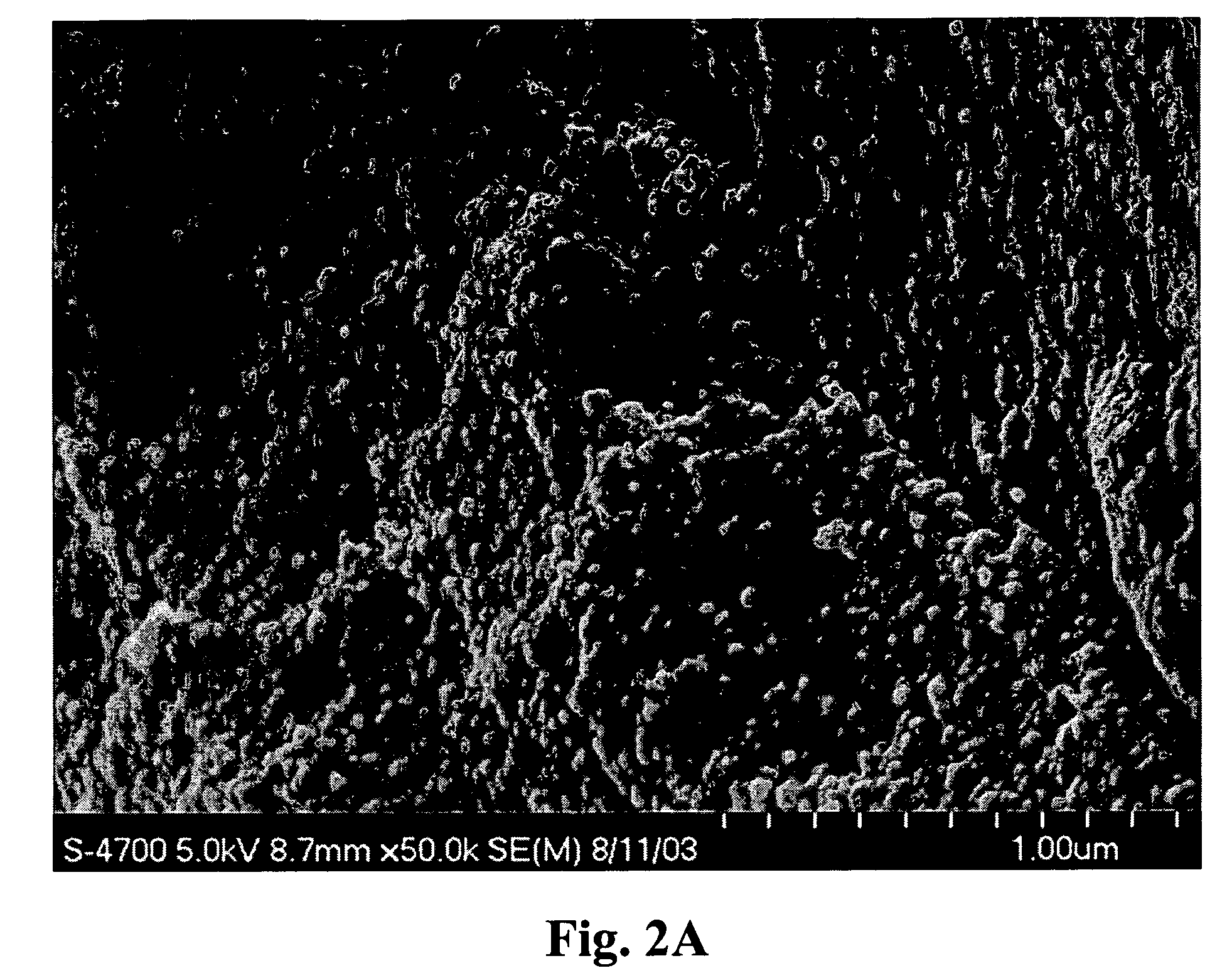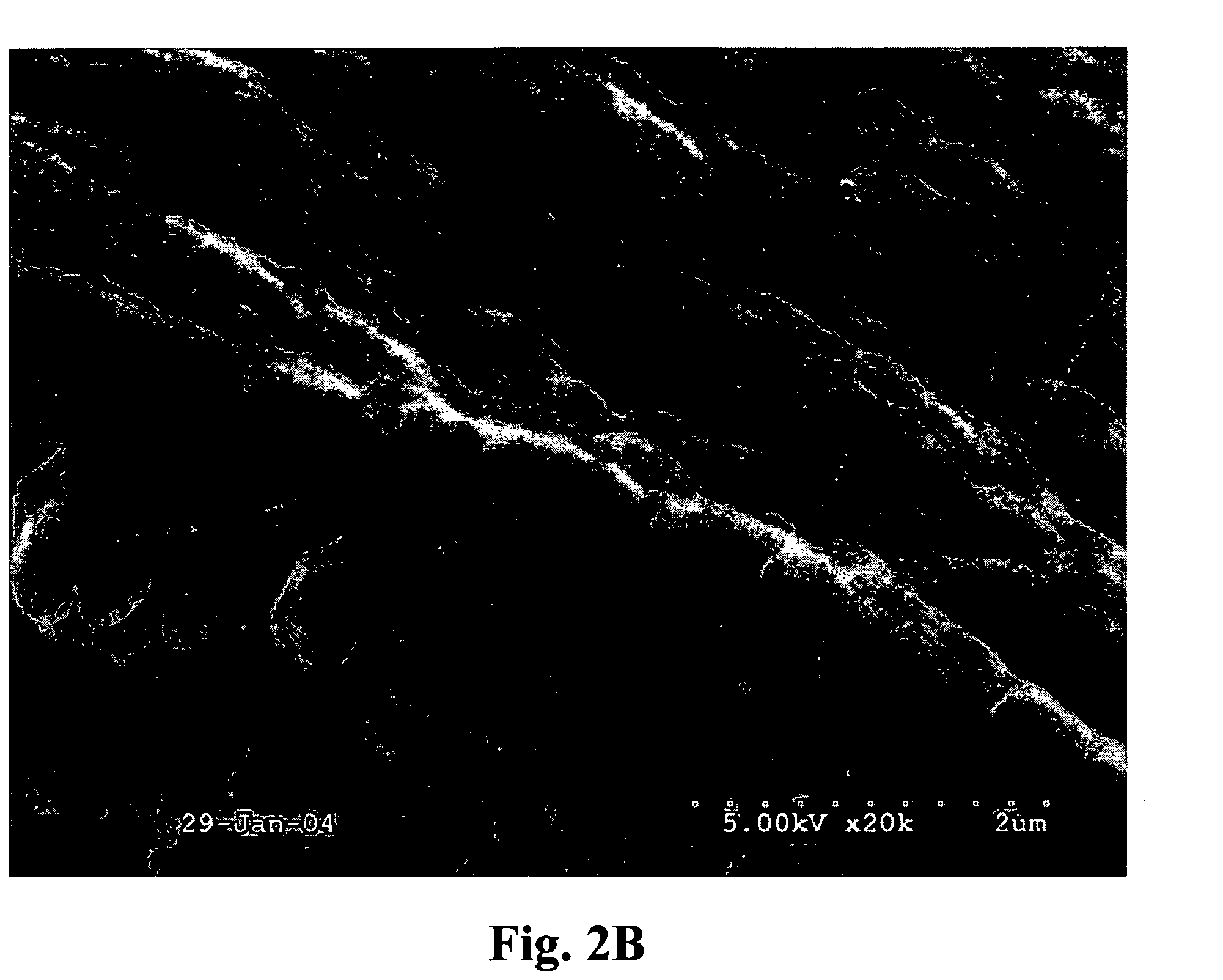Protein biomaterials and biocoacervates and methods of making and using thereof
a biocoacervate and biomaterial technology, applied in the direction of peptide/protein ingredients, powder delivery, unknown materials, etc., can solve the problems of uncontrollable release, unsuitable device for controlled drug delivery, and many previously developed devices that do not offer sufficient strength, stability and support, etc., to achieve enhanced biomaterials and/or devices, the effect of reducing, if not eliminating, the risk of residual solvent toxicity or adverse tissue reaction
- Summary
- Abstract
- Description
- Claims
- Application Information
AI Technical Summary
Benefits of technology
Problems solved by technology
Method used
Image
Examples
example 1
Preparation of Biocoacervate
[0218] Soluble bovine collagen (Kensey-Nash Corporation) (1.5 gs) was dissolved in distilled water (100 mls) at 42° C. To this solution was added elastin (bovine neck ligament, 0.40 g) and sodium heparinate (0.20 g) dissolved in distilled water (40 mls) at room temperature. The elastin / heparin solution was added quickly to the collagen solution with minimal stirring thereby immediately producing an amorphous coacervate precipitate. The resulting cloudy mixture was let standing at room temperature for 1-2 hrs and then refrigerated. The rubbery precipitate on the bottom of the reaction flask was rinsed three times with fresh distilled water and removed and patted dry with filter paper to yield 6.48 gs of crude coacervate (Melgel™) which was then melted at 55° C. and gently mixed to yield a uniform, rubbery, water-insoluble final product after cooling to room temperature. The supernatant of the reaction mixture was later dried down to a solid which weighed ...
example 2
Biocoacervate Materials Including Additives and pH Solutions
[0219] MelGel™ material was prepared as described in Example 1. Nine 1 g samples of MelGel™ were cut and placed in a glass scintillation vial. The vial was then placed in a water bath at 60° C. and melted. Once melted either an additive or pH solution was added to each sample of MelGel™. The following additives were administered: polyethylene glycol, chondroitin sulfate, hydroxyapatite, glycerol, hyaluronic acid and a solution of NaOH. Each of the above mentioned additives were administered at an amount of 3.3 mg separately to four melted samples of MelGel™ with a few drops of water to maintain MelGel™ viscosity during mixing. Each of the above mentioned additives were also administered at an amount of 10 mg to another four melted samples of MelGel™ with a few drops of water to maintain MelGel™ viscosity. Finally, NaOH was added to the final melted MelGel™ sample until the MelGel™ tested neutral with pH indicator paper. Th...
example 3
Preparation of Ground Particles
[0220] A sample of Melgel™ was cut into small pieces and treated with a glutaraldehyde (0.1-1.0%) aqueous solution for up to 2 hours. The resulting coacervate (Melgel™) material was then dried at 45° C. for 24 hours and ground to a fine powder and sieved through a 150μ screen. This powder was then suspended in phosphate-buffered saline to give a thick, flowable gel-like material which could be injected through a fine needle (23-30 ga.). This formulation is useful for augmentation of facial wrinkles after intradermal injection.
PUM
| Property | Measurement | Unit |
|---|---|---|
| size | aaaaa | aaaaa |
| size | aaaaa | aaaaa |
| temperature | aaaaa | aaaaa |
Abstract
Description
Claims
Application Information
 Login to View More
Login to View More - R&D
- Intellectual Property
- Life Sciences
- Materials
- Tech Scout
- Unparalleled Data Quality
- Higher Quality Content
- 60% Fewer Hallucinations
Browse by: Latest US Patents, China's latest patents, Technical Efficacy Thesaurus, Application Domain, Technology Topic, Popular Technical Reports.
© 2025 PatSnap. All rights reserved.Legal|Privacy policy|Modern Slavery Act Transparency Statement|Sitemap|About US| Contact US: help@patsnap.com



